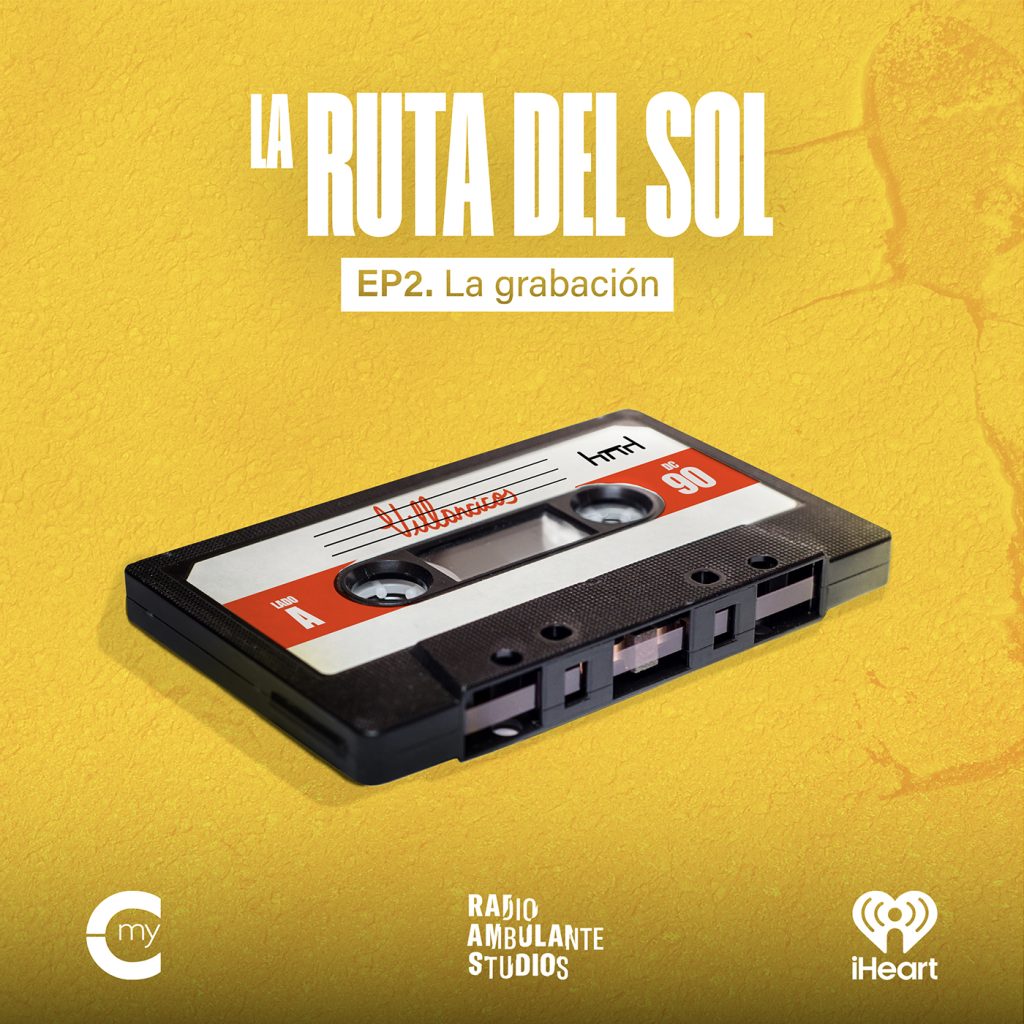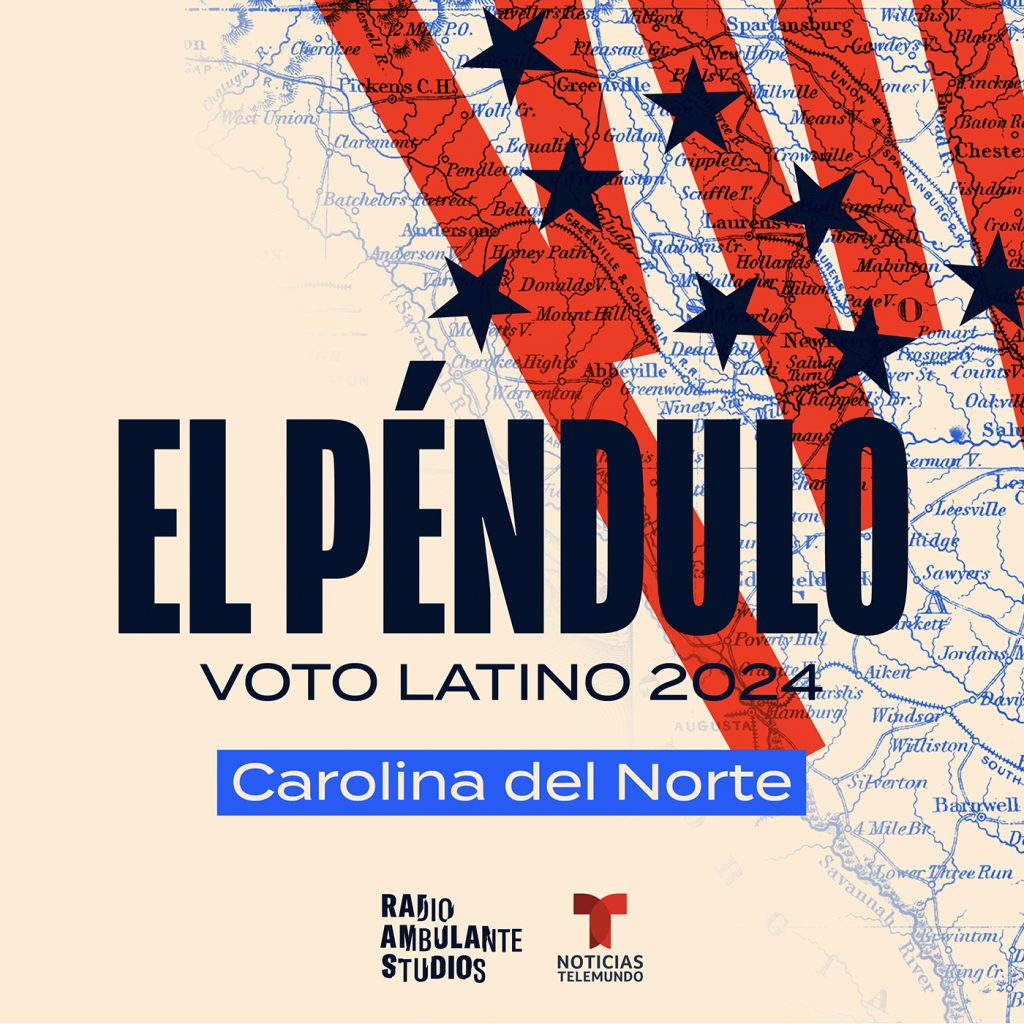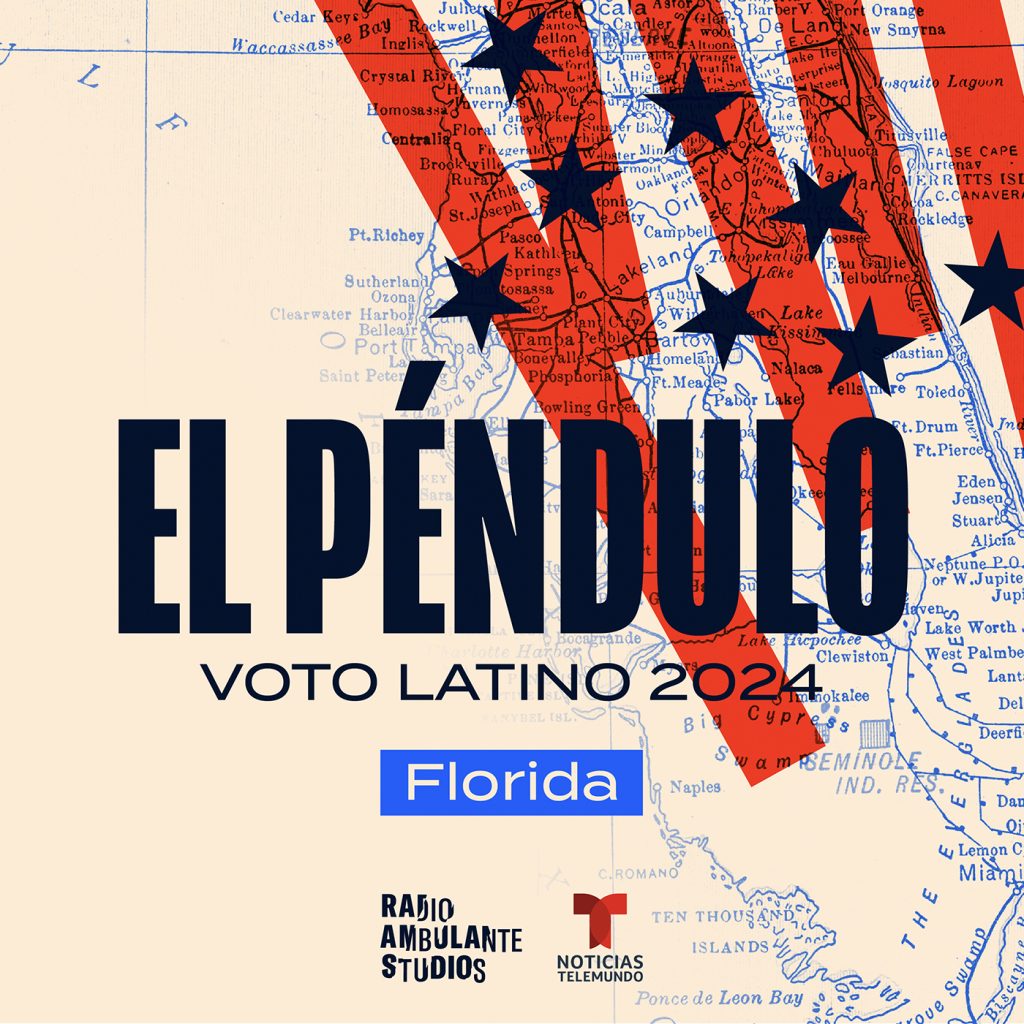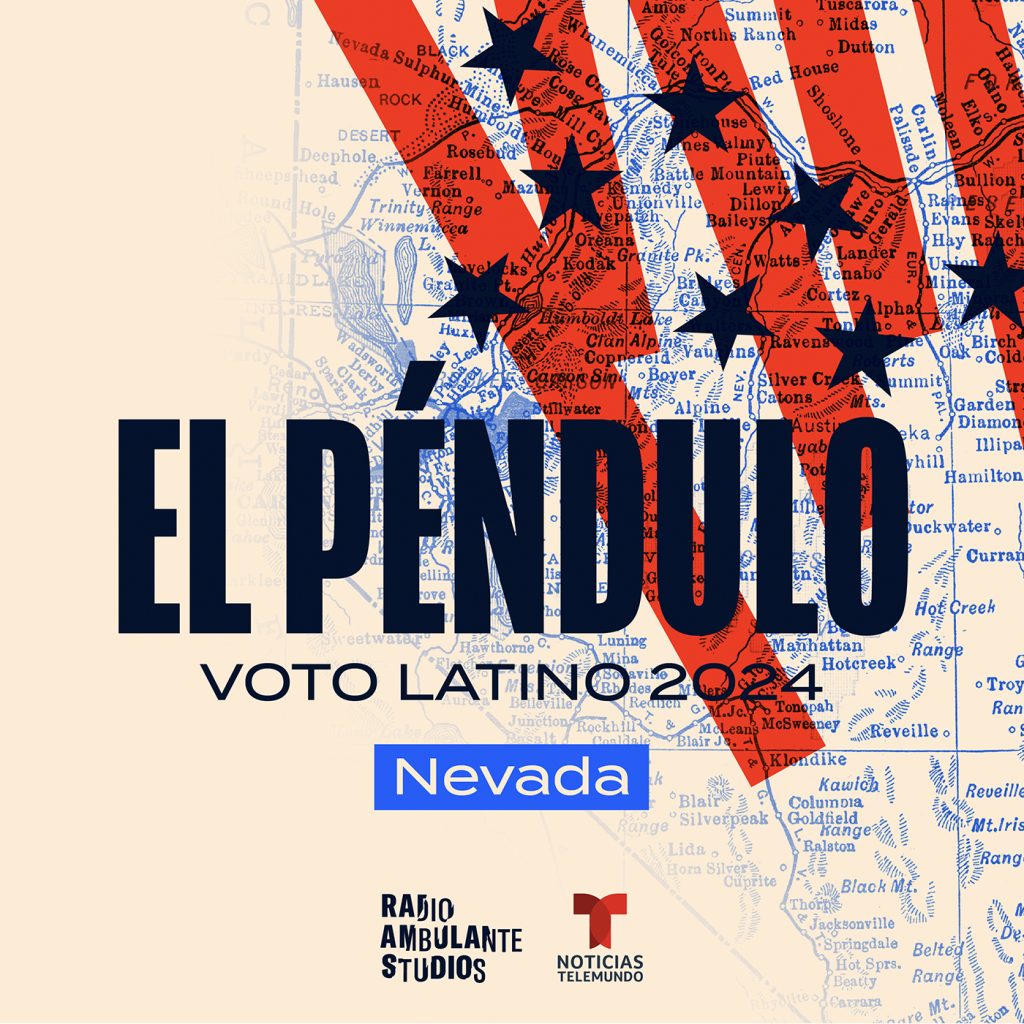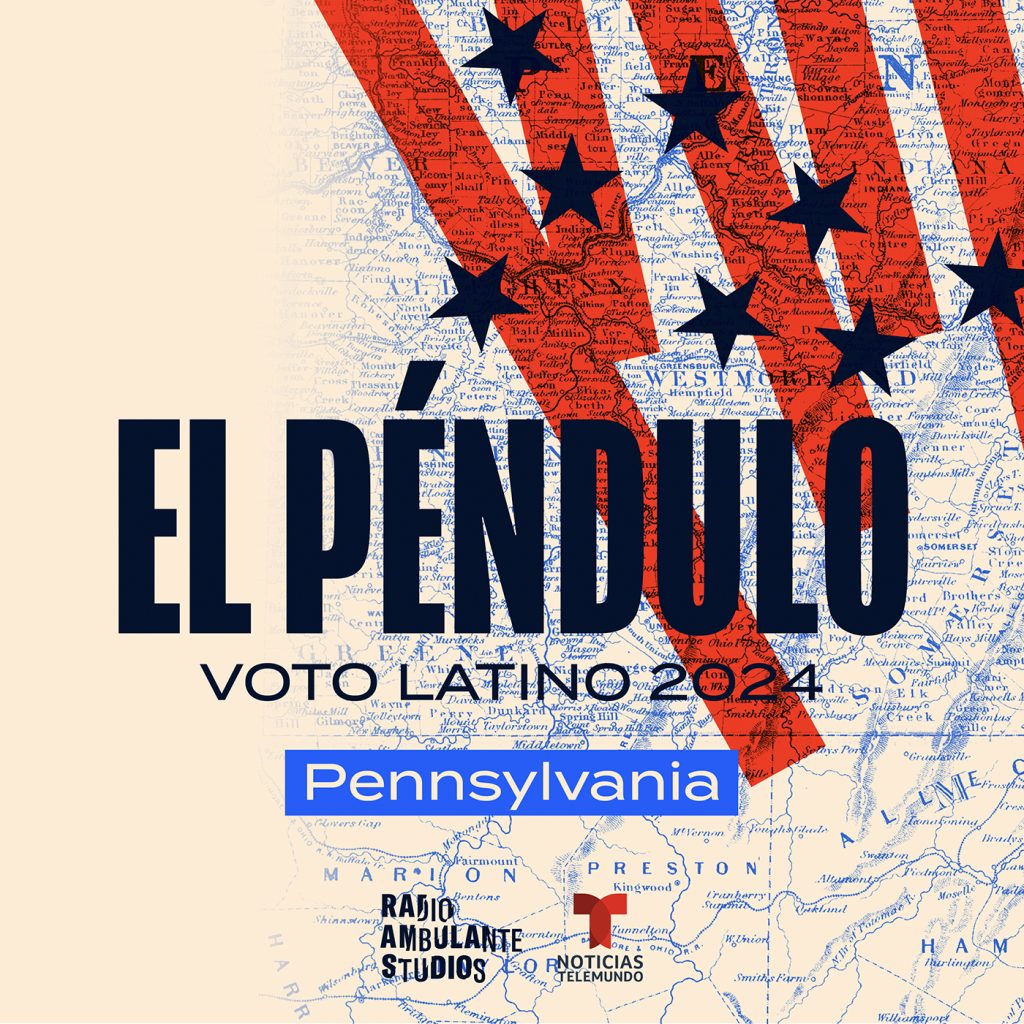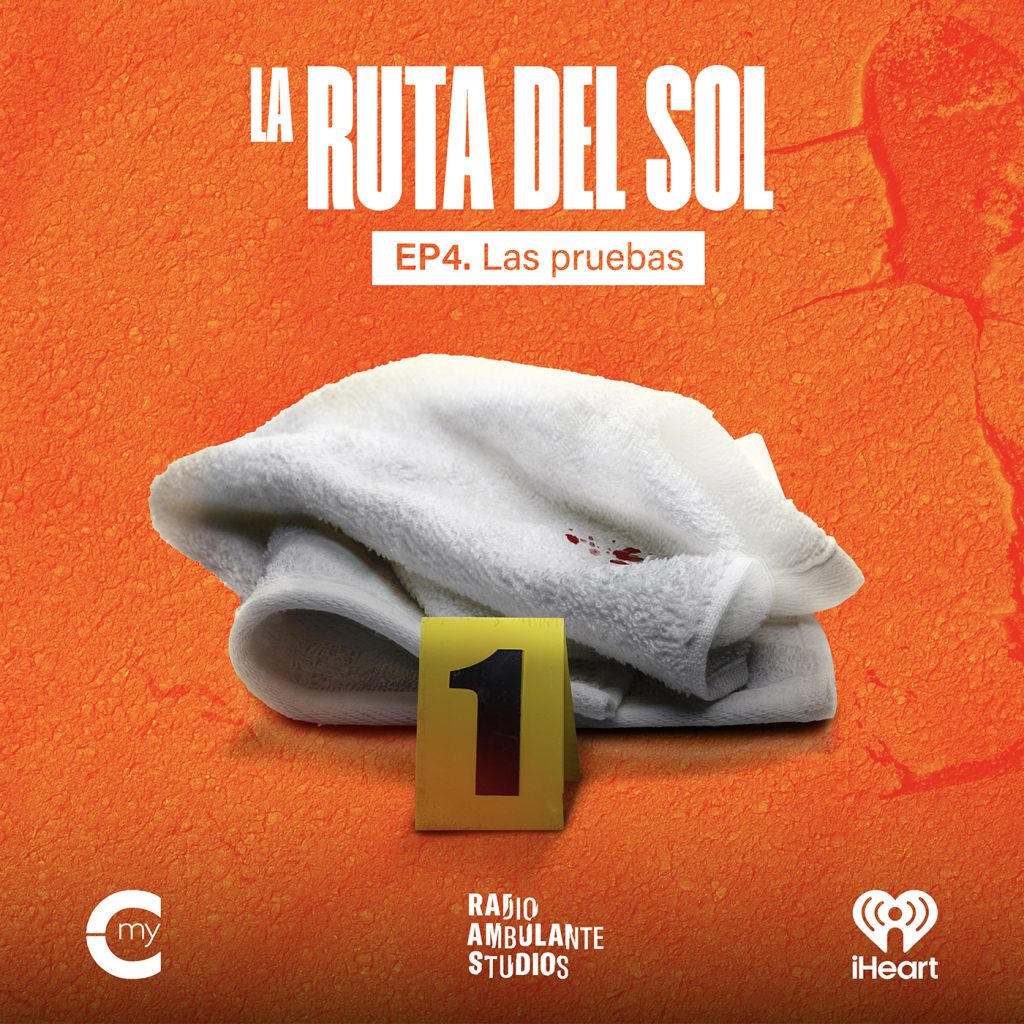
[David Trujillo]: In the previous episode…
[Mábel Lara]: Engineer Jorge Enrique Pizano, key witness in the Odebrecht bribery scandal in Colombia and who passed away last Thursday, left the evidence of his complaints in the hands of Noticias Uno since last August.
[Jorge Enrique Pizano]: I presented the reports to the person who appointed me as controller, right? Not only the final report, but everything… the evidence of those emails exists. And here, it’s clear and concrete evidence. It’s not that I heard, that I said, no. It’s what’s in the documents and it is the documents that speak.
[David]: Noticias Uno also revealed the audio that Jorge Enrique had recorded with the then Attorney General of the Nation, Néstor Humberto Martínez, who at the time of that recording was a lawyer for Grupo Aval.
[Néstor Humberto Martínez]: Look, we’re doing one hell of an investigation. I mean, you… because I see you in a state of anxiety. Of course.
[Jorge Enrique Pizano]: No, no
[Néstor Humberto]: So Sarmiento sends word to me: nothing.
[Jorge Enrique]: Okay. Because the thing is…
[Néstor Humberto]: Nothing.
[Jorge Enrique]: Well. Because the thing is…
[Néstor Humberto]: Nothing.
[Néstor Humberto]: But if you know about something…
[Jorge Enrique]: Of course.
[Néstor Humberto]: Sound the alarms. And this is the way, because, damn, over there they’re pissed about what happened three years ago, that you sounded the goddamn alarms, and nobody paid attention to you.
[David]: That and the tragic death of Alejandro Pizano made the scandal break. Now the key question was: why was there cyanide in the bottle? Had Jorge Enrique also taken the poison? The then director of the Institute of Forensic Medicine had opened a possibility during a press conference…
[Carlos Valdés]: However, the person who performed the clinical autopsy left samples of different tissues for histopathology studies. The investigation that the Attorney General’s Office has currently undertaken will most surely order the analysis of those samples.
[David]: So… this episode begins with a visit.
It was a few days after Alejandro Pizano’s death and shortly after they had announced the result of the autopsy. Burdened by confusion, anguish and the pressure from the media, the Pizano Ponce de León sisters and their mother received the then Attorney General of the Nation, Néstor Humberto Martínez, for a private conversation. As we had mentioned, he knew Jorge Enrique from before he was Attorney General and their sons had been best friends since school, so he was not a stranger to them. And, in fact, it was Martínez’s son who arranged this visit.
The daughters remember that the Attorney General arrived visibly moved. He wanted to give them his condolences.
[Juanita Pizano]: He told us that he was very sorry, that he knew he could have done more for my dad and he cried and all.
[Carolina Pizano]: So, like playing the grieved one, the hurt one. No, and now my position, right? Like, everyone is doubting me. He cried, but the kind of tears that… like when a child misbehaves, cries and convinces the parents that it wasn’t their fault. And as soon as the parents forgive them they’re perfectly fine again…it’s like, but yes…like…emotional manipulation. Manipulation when we were the most vulnerable we had ever been in our lives.
[David]: He told them that he would personally take on the investigation of what had happened, he talked about all the technology that the Attorney General’s Office had to find the truth.
[Juanita]: But immediately after saying that, he told us: but I need you to release a statement because people are going crazy. So I need you to release a statement to say that you support the Attorney General’s Office investigation.
[Carolina]: Of course, we fell completely for that manipulation. It was like yes, do what you have to do. Yes, do what you have to do. We couldn’t think straight. And it’s something that people don’t understand, and it’s how difficult it is to try to think with clarity in those moments.
[David]: And so, following what they understood as a request from Martínez, on November 16, 2018, two days after the interview they had given to Caracol Noticias, the Pizano Ponce de León family published the statement in the media. In it they said they would not give statements on judicial matters because Jorge Enrique had already given everything to the authorities. They also asked that their painful situation not be used in political arenas. Regarding the deaths, they said they were waiting for the results of the investigations by the Institute of Forensic Medicine and the Attorney General’s Office.
But that didn’t make the scandal wane. That same day, the newspaper El Espectador revealed a new audio recorded by Jorge Enrique. In this one, which was also recorded secretly, you can hear Martínez reading a list that a criminal lawyer had given them of the possible crimes that had been committed based on Jorge Enrique’s findings. Listen carefully: Martínez mentions, literally, the word crimes.
[Néstor Humberto]: Look at all the crimes that have been committed.
[David]: He says: look at all the crimes that have been committed. Crimes…not irregularities, as he said in the Caracol interview. And he makes a list:
[Néstor Humberto]: Bribes, money laundering, falsification of private documents, disloyal administration, breach of trust, fraud, aggravated theft by trust, embezzlement by appropriation.
[David]: I repeat: bribes, money laundering, falsification of private documents, disloyal administration, breach of trust, fraud, aggravated theft by trust, embezzlement by appropriation.
That same day part of the results of the investigation into the deaths were also released. Remember that Jorge Enrique’s body was cremated because, according to the autopsy, he died of natural causes, from cardiac arrhythmia. But there was an alternative to find out if he had also taken cyanide: to analyze the tissue samples we already mentioned, those that were kept after the autopsy. Carlos Valdés, the then director of the Institute of Forensic Medicine, held a press conference to announce the results publicly. The ruling was conclusive.
[Carlos Valdés]: No cyanide was found in any of the tissues or in the solution that contained the tissues.
[David]: With that result, the initial ruling that Jorge Enrique had died of natural causes remained standing.
But that didn’t really clarify anything. Alejandro’s death had not been of natural causes and the most important question around the Pizano case was how the cyanide had gotten into that bottle. There were other doubts, yes, and more could come up, but if that fact came to be known, the case would stop being a mystery to become a tragedy for which someone was responsible.
That’s why, that weekend, six days after Alejandro’s death, the CTI, the Technical Investigation Unit of the Attorney General’s Office, went to the house where both had died to do a more detailed inspection. The evidence had to be there.
From Central Series and Radio Ambulante Studios, this is La Ruta del Sol.
I’m David Trujillo. Episode 4: The Evidence.
[David]: The last time the Pizano Ponce de León family had entered the house where it all happened was during the first visit of an investigator from the CTI, the Technical Investigation Unit of the Attorney General’s Office, when Alejandro had just died. It was a very quick examination and that day nothing was taken.
But on Saturday, November 17, almost a week later, they were summoned again, early, to begin the detailed inspection. And something important must be made clear: according to what journalist María Jimena Duzán published, from the begining, the order to do this inspection was based on the hypothesis that what had happened, at least in Jorge Enrique’s case, was a possible suicide due to economic problems. There is no mention that they were considering other options. And nothing related to his work on Ruta del Sol II or the revelations from Noticias Uno.
The first thing the investigators did was take statements, separately, from the two people who took care of the place, a man and a woman, who were a couple. They also interviewed the housemaid and another worker. And the family, of course: the two sisters and their mother.
In that interrogation Juanita felt that the conversation was being directed toward the topic of suicide.
[Juanita]: So the lady literally asked me like: And do you think your dad wanted to commit suicide and why? And…but was he depressed? On a scale of one to ten, how depressed was he? How many times did you see him cry? And like that, very repetitive.
[David]: Even after that formal interview, another investigator approached Juanita to try to continue talking about the subject.
[Juanita]: She acted nice and asked me how I was, etc. And I was like no, well normal. I mean, surviving. And she asked me: Do you really think your dad didn’t want to commit suicide? Like that. Who was going to hurt him? Who was going to want to hurt him anyway? And I told her like: my dad had been threatened for many years and I think there were several people who wanted to hurt him, honestly.
[David]: After taking the statements, they talked to them about how they would do the inspection of the house. The plan was to examine each space in great detail, first the upper floor and then the lower one. Carolina was there when one of those officials made something clear to her.
[Carolina]: Yes, he was very diligent and told me: we’re going to do this and that, we’re not going to enter any room in your absence. We’re not going to open anything without your authorization or we’re not going to do anything without you being there.
[David]: She even remembers signing a document to authorize the inspection. Then they made them put on the same white suits, gloves and face masks worn by the investigators, who were at least ten.
[Carolina]: So we started with my parents’ room. But we spent many hours in that room. At least three hours.
[Juanita]: I sensed that they had instructions to look for something with details not so… like broader. So they didn’t know exactly what they were looking for, but they were desperately looking for something and like they couldn’t find it and couldn’t find it.
[Carolina]: But they seemed… I don’t know, it’s like…Imagine like zombies, right? who are desperately looking for something to bite, something to eat.
[David]: In the middle of that search they found a suitcase full of Jorge Enrique’s documents. At that moment, the official who had explained the procedure to Carolina stopped them.
[Carolina]: And I remember he said: they’re not going to take anything that isn’t related to the death. But they did take the hard drives and they took the security camera recordings.
[David]: The security cameras of the house…And also Jorge Enrique’s cell phones.
Then, in that bedroom’s bathroom, where his wife had found him dying, there was a towel…that towel was also noticed by the first investigator who went to the house when Alejandro had just died, but he had left it in the same place.
[Carolina]: I really didn’t understand the towel thing. At that moment it really didn’t seem that relevant.
[Juanita]: That was the towel my dad was wrapped in when he died. But there was something kind of red or brown on the towel.
[David]: Some stains… very visible. They looked like blood.
[Carolina]: They took it. But I…at that moment I said well a towel with blood, like it has nothing to do with my dad’s death, right, because it’s blood from where. I mean, he shaved and cut himself, was what I thought.
[David]: But that towel would be very important later.
A lot of time had already passed in the inspection. It had gotten dark and they still hadn’t started examining the first floor. At one point, they decided to stop and resume a few minutes later. The family left the house.
Juanita went to the car with her mother. But since her cell phone battery was dying, she went back into the house, without the white suit or the face mask or the gloves, to plug it in the living room. There, she noticed there was commotion among the investigators.
[Juanita]: I said: I’m going to see what they’re doing, because well I’m already here. And at that moment I went up and on that kind of mezzanine all these people were gathered there.
[David]: They were next to a bathroom that everyone had used during the long day of inspection. Many people had been going in and out all day.
[Juanita]: And the man there said: We just found something. And I said: You just found what? And he shows me a container.
[David]: A plastic container that was wrapped in -also plastic- bags. It was white, flattened, cylindrical, medium-sized. They had found it in that bathroom, in the drawer under the sink and behind a speaker from a sound system. It had a red screw-on lid and a label that said potassium cyanide, and just below the quantity: 1 kilo.
They called Carolina, who had also stepped out of the house.
[Carolina]: And that’s when they told me they found a container with cyanide and so then I went in. But then I asked myself: But how, if I had to be present, how did they continue searching? If they told me we were going to take a break. What happens next? I remember they take a photo there.
[David]: Two photos: one of the container wrapped in the bags and another of the drawer under the sink, where they found it. Both photos were uploaded the next day on the Attorney General’s Office X account.
[Carolina]: And so one says: to what extent is this private? Yes, I mean, did we authorize them to publish a photo of evidence? Well no. So, how does the Attorney General’s Office share information that way. When there’s an investigation, the evidence isn’t supposed to be shown, right?
[David]: With the publication on social media, the media began to replicate the news.
[Journalist]: The substance was found yesterday in the house where Jorge Enrique and Alejandro Pizano died, when agents from the Attorney General’s Office were looking for elements and evidence. Two judicial prosecutors and members of the Pizano Ponce de León family were summoned there.
[Journalist]: The Attorney General’s Office has said that biological traces and fingerprints were already collected and delivered to the director of Forensic Medicine so it can be established who brought this kilo of cyanide into the Pizanos’ house.
[Carlos]: When they found it, I said here’s what we’ll do, we’ll test if Jorge Enrique Pizano touched those plastics and the container, right?, because to know if, if he had manipulated the cyanide.
[David]: He is Carlos Valdés, the director of Forensic Medicine at that time.
[Carlos]: I am a surgeon doctor specialized in forensic anthropology. I have practiced forensic medicine for 37 years.
[David]: At that time, he had been directing the Institute for seven years. He was appointed, like all directors, by the Attorney General’s Office. And Carlos arrived with a characteristic that his predecessors didn’t have: his constant appearance in the media. For Carlos it was always very important to speak publicly about the progress of the investigations that Forensic Medicine carried out.
[Carlos]: Look, for me it wasn’t a problem. Because science wouldn’t make any sense if that scientific knowledge is not given to society, right? So, as I was entitled to do by Colombian law and international law, well I periodically announced those scientific results to the media. Right?
[David]: And this Pizano case, which was so mediatic, was not the exception.
Carlos remembers that his media appearances began two days after Alejandro’s death, that is, on November 13, when he announced, along with the Attorney General’s Office, the cyanide poisoning. In that same press conference he also mentioned the samples from Jorge Enrique’s tissue.
[Carlos]: Those samples arrive at the Institute and arrive at the Institute in formaldehyde..
[David]: Submerged in formaldehyde to preserve them. That is a very important fact because that substance can eliminate cyanide and make its detection more difficult. But Carlos insists that they were prepared for that type of situation.
[Carlos]: The samples that always arrive at the Institute of Forensic Medicine are difficult samples. They are not the same samples that can arrive at a private laboratory or at a university laboratory. I mean that they are samples that are generally contaminated, they are samples of chemical substances that are not pure.
[David]: And for that very reason, according to Carlos, the Institute has protocols, quality criteria and specific technology to analyze those difficult samples, as he calls them.
When they received Jorge Enrique’s tissues they couldn’t examine them in the Bogotá laboratory, because the equipment to do the analyses wasn’t working at that time, so they had to send them to another city.
[Carlos]: The analysis is performed by a toxicologist chemist, with a doctorate in toxicology and was done on a large liver fragment of 11 by 12 centimeters, which, according to the toxicologist chemist’s description, when making the cross cut, in the center there was blood, the formaldehyde present in the periphery of the fragments hadn’t reached the center. And he affirms that from there he took the sample and that sample was valid for the toxicological chemical study and that the result was that it had no cyanide.
[David]: We already said Carlos announced those results, at another press conference on November 16, five days after Alejandro’s death, and the cardiac arrhythmia remained the official cause of death. But the fact that there was no cyanide in that sample from Jorge Enrique’s liver didn’t mean the case was solved. The same question remained unresolved: how did the cyanide get into the bottle?
Let’s go back then to the house inspection that the Technical Investigation Unit of the Attorney General’s Office, the CTI, did one week after the deaths. Remember that during the process they found the cyanide container that Carlos asked for, so that Forensic Medicine could establish if Jorge Enrique had touched it. On November 20, three days after the house inspection, Carlos announced the results at a new press conference.
[Carlos]: The conclusion that the Institute of Forensic Medicine has reached is that the DNA samples recovered from both the external bag, the internal bag and the container, on its lid and on the body, the cyanide container, belong to Mr. Jorge Pizano, with high scientific certainty. What can be said is that he touched the external bag, he touched the internal bag and he touched the container’s body and lid.
[David]: The Attorney General’s Office found the store in which that kilo of cyanide was bought, but they couldn’t establish who bought it, because they only had registered half of the buyers’ names and none of those was Jorge Enrique’s. According to the daughters, the Attorney General’s Office told them they were going to check the security cameras in the area, but then they realized they weren’t working.
So, let’s recap: according to Forensic Medicine, Jorge Enrique touched the cyanide container and the bags it was wrapped in. There was the possibility of suicide because of the very difficult situation he was going through. But they didn’t find the poison in the tissue sample. So there was one last option to confirm the cause of death: to analyze the towel that was in the bathroom and the possible biological traces that were there.
A break and we’ll be back.
[David]: We’re back at La Ruta del Sol.
Carlos Valdés, the then director of Forensic Medicine, received the information about the towel from the Attorney General’s Office. They told him that Jorge Enrique’s family had said that was the towel he had when they found him collapsed in the bathroom. Also that it had some brown stains.
[Carlos]: And I assumed that stain was… since it was brown, I said that’s blood, possibly it’s blood. And I assumed it was blood, because when you bleed and the blood stays on a fabric, it oxidizes and gives that brown color. My response was: bring the towel, bring it, give it to Forensic Medicine and we’ll do the test. And I told my deputy director, I said: arrange for them to do both toxicological chemistry exams, to see if that stain has cyanide and if that stain is from Jorge Enrique Pizano. And I told her please, inform me when the results come in.
[David]: They came out on November 27, 10 days after the Attorney General’s Office CTI inspection in which they found the towel.
[Carlos]: So, as I always used to give the scientific results, I went to the media and told them:
[Archive]
[Carlos]: The results are the following: first, it’s human blood. Second, the DNA recovered from there corresponds to Mr. Jorge Pizano’s. Third, the stain does not contain cyanide.
[David]: With those results, the delegated prosecutor for Citizen Security of the Attorney General’s Office, who accompanied Carlos at that press conference, spoke about what the investigation was pointing to up to that moment.
[Luis González]: Up to that moment this is the conclusion: Jorge Enrique Pizano’s death is of natural causes and is the product of a cardiac arrest. That is, there are no criminal hands in Jorge Enrique’s death. Up to the moment the investigation shows us those conclusions.
[David]: Death by natural causes, no criminal hands…But they had already said it was clear that Jorge Enrique had touched the cyanide container… and we already know that, indeed, there was cyanide in the flavored water bottle.
As if there wasn’t enough confusion, at that same press conference Carlos also announced the results of the analyses of that bottle.
[Carlos]: And the result is that within the diverse genetic material that was found, Mr. Jorge Pizano’s DNA appeared. That’s the result: Mr. Jorge Pizano’s DNA was there.
[David]: And he confirmed, right after a journalist’s question, that that DNA was on the body of the bottle.
So. A summary of where evidence stands at this point. According to Forensic Medicine, yes there was Jorge Enrique’s DNA on the cyanide container and on the bags that wrapped it. Also on the towel and on the water bottle. But no traces of cyanide were found in the tissue samples or in the brown stains on the towel.
So, everything indicated that Jorge Enrique handled all the objects that had cyanide, but he didn’t consume it…and he had still died. By that time, the Attorney General’s Office already had an idea of what had happened, based on the analysis results.
[Juanita]: The Attorney General’s Office’s theory is that my dad dies from a heart attack. They rely mainly on the medical history of the cancer.
[David]: And on the fact that they didn’t find cyanide in the tissue analyses.
Also that Jorge Enrique had intentions of committing suicide and that, in fact, he planned it. He put the cyanide in the flavored water bottle, only to die before drinking it.
For Juanita and her family the suicide wasn’t unimaginable.
[Juanita]: I know that in his head the possibility of suicide could exist, because they made him lose all his dignity, his work, which was what he lived for. He was left in debt, without friends, everyone turned their backs on him. My dad felt very lonely.
[David]: But let’s remember that the hypothesis of the CTI inspection of the Attorney General’s Office was based on economic problems. They didn’t take into account everything he had discovered about the irregularities of Ruta del Sol II, nor the Attorney General’s Office investigation against him.
For the family, if there was a suicide attempt, it was induced by the pressure they subjected him to and it was absurd that the Attorney General’s Office reduced it to only economic problems. They had seen him in very bad shape for a long time and even Juanita remembers once when he spoke to them about this possibility.
[Juanita]: And I know he said like I want to die. I mean, what is this? One time, when the Attorney General’s Office was pressuring him, at a lunch he told us like, I want to be clear, and with tears in his eyes he told us, but if they put me in jail, I’ll kill myself and that’s it, because I’m not going to put you through this. Because I’m innocent and I, I couldn’t bear it.
[David]: Around those days, Néstor Humberto Martínez, the then Attorney General, returned to visit Jorge Enrique’s wife. Juanita remembers having listened in on that conversation and assures that Martínez said something more shocking than the idea of suicide: that if the investigation continued, some congressmen opposed to the acting government would say that Alejandro had died because of Jorge Enrique. That that was the cause of his death: homicide.
[Juanita]: And the active subject of the crime, which would be, according to them, my dad, for the alleged crime of manslaughter by negligence, is dead. So the theory is that my dad put the bottle there and culpably, I mean, like unintentionally and intentionally, so to speak, killed my brother.
[David]: So, a failed suicide attempt and then a tragic accident.
[Juanita]: And in this conversation, Néstor Humberto tells my mom: it’s better to close the investigation, for us it’s better, well, if you agree.
[Carolina]: It’ll be what you say, it’ll be what you want, but see let’s do this. And in the middle of all those things he was saying things like if there’s an investigation, it’s going to come out that Jorge Enrique was guilty of Alejandro’s death. So, of course, if they tell you that, you, in deep pain, say no, well no, better not, because we don’t want them to say now that Jorge Enrique was guilty.
[Juanita]: Also, at that moment we only wanted to be left alone. So what are they going to investigate? I mean, the bottle, the fingerprints, the towel… I mean, that’s it. That’s when well, let’s say we give our consent for them to file the investigation or close it, I don’t know.
[Carolina]: But if you realize, that’s pure manipulation at the moment.
[Juanita]: We didn’t have a choice. I mean, what else do you do if you have the Attorney General of the Nation in front of you telling you these things? Especially to my mom, who well first has no legal knowledge no matter how intelligent she is, and second, being as emotionally vulnerable as one is after losing one’s husband and son.
[David]: They didn’t want to suffer anymore. It wasn’t worth insisting on an investigation that was going nowhere. At the end of November, the family left the country to get away from the media circus they had been put in.
But for them, even from there and with the Attorney General’s Office hypothesis, everything that had happened to them seemed almost surreal. Beyond the pain they felt that everything that had to do with the case was very confusing.
[Juanita]: We didn’t understand that difficulty to establish. Because there was no clarity of literally anything, of what procedures were being carried out, of when they were carrying them out. If someone entered the house without us knowing, who had the bottle in their hands, who put the bottle there.
[David]: And they weren’t the only ones asking these questions.
A pause and we’ll be back.
[David]: We’re back at La Ruta del Sol.
Around the already messy and confusing case of the Pizano deaths, in the corridors of Forensic Medicine rumors began to spread that something strange was happening.
[Javier Oviedo]: Well, my name is Javier Oviedo Gutiérrez.
[David]: Javier has been at Forensic Medicine for more than 20 years.
[Javier]: I am an expert in the area of anthropology, and I also serve as president of the National Union of Workers of the Institute of Forensic Medicine.
[David]: And since he got involved with the union he has also been working for the rights of his colleagues and against possible abuses of power.
Regarding Carlos Valdés, the director of the Institute at that time, Javier remembers how mediatic he was in that position and the way he spoke publicly about cases that were being investigated. But that, according to Javier, was not the director’s responsibility, he shouldn’t communicate those procedures.
[Javier]: Our role as an Institute is technical and scientific support to the administration of justice. But that is part of the confidentiality of a process. That is, we are not, let’s say, enabled, so to speak, by the regulations to go out and do that, because we are violating confidentiality. The one who owns the information is the prosecutor.
[David]: The prosecutor who carries the case. And it’s that prosecutor who should, according to Javier, talk about the evidence during the oral trial, not the director of Forensic Medicine before the media.
That’s why the union had been following up on those announcements and collecting evidence of possible irregularities in other cases. But none of that had been made public until the Pizano case arrived.
[Javier]: Which was, let’s say…the final straw. I mean, we can’t let this pass. That already goes against the institution itself, it’s playing with the Institute’s credibility.
[David]: On December 9, 2018, a month after the deaths, Javier made public the complaints that something weird was happening.
[Journalist]: And the president of the Forensic Medicine union, Javier Oviedo, denounced alleged irregularities in the autopsy and genetic studies that were performed on engineer Jorge Enrique Pizano.
[Journalist]: Supposedly, the techniques that were used to determine what were the causes of death of the Odebrecht case witness are not validated at the Institute of Forensic Medicine.
[David]: The results of the analyses were beginning to be questioned. And that meant that the questions were coming back.
In the next episode…
[Javier]: We had the feeling that they were covering something up, because what was the need to go out and lie. That empowered us more to say no, something has to be done here. So that’s when we decided to take a risk. And we decided to take that out to the media.
[Journalist]: Oviedo went further. He refuted Valdés’ statements about a towel stained with blood.
[Javier]: Do we want to ask the general director how he can say that the blood stain was Jorge Pizano’s if there’s no reference sample because the body was cremated?
[Carlos]: Ah, well I don’t know how many hands, but only Jorge Enrique’s was found on the bottle. I don’t know how many hands might have touched it. Or I don’t know how it was manipulated, yes, that I wouldn’t know.
[David]: There were three pieces of evidence that caused controversy: the autopsy, the bottle and the towel. The results of their analyses didn’t seem to convince everyone.
Credits:
[David]: La ruta del sol is a podcast from Central, Radio Ambulante Studios’ series channel, and is part of the My Cultura podcast network from IHeart Radio.
The reporting and production of this episode were done by me, David Trujillo, with production support from Desirée Yépez. The lead editor is Camila Segura, with additional editing by Daniel Alarcón, Silvia Viñas, and Eliezer Budasoff. Eliezer is the project manager. Fact-checking is by Bruno Scelza and Sergio Sebastián Retavisca. Camilo Vallejo did the legal review. Sound design and mixing are by Martín Cruz, with original music by Andrés Nusser. The graphics and art direction for the series are by Diego Corzo.
Product development for La Ruta del Sol was led by Natalia Ramírez. Digital production by Nelson Rauda, with support from Melisa Rabanales and Samantha Proaño from the Radio Ambulante Studios audience team.
La Ruta del Sol was recorded at Fiona Records.
At iHeart, the executive producers are Arlene Santana and Leo Gomez.
We’d like to thank FLIP for their valuable support in the legal review of this production and their guidance on security matters.
Carolina Guerrero is the executive producer of Central and the CEO of Radio Ambulante Studios.
You can follow us on social media as centralpodcastRA and subscribe to our email newsletter at centralpodcast.audio
I’m David Trujillo. Thanks for listening.


